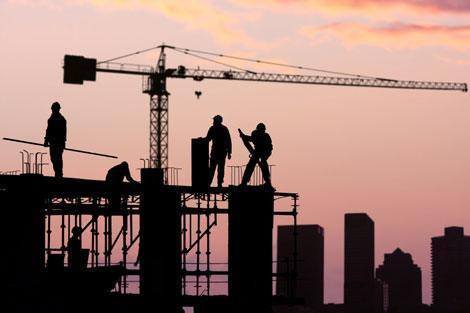October 28, 2013 – Construction workers are frequently stressed about work-related injuries and pain and often fail to seek help, putting themselves at risk for more injuries and mental health issues, including depression, anxiety, and even suicide, according to a new study by researchers at Harvard School of Public Health (HSPH).
The study was published online October 1, 2013 in the Journal of Occupational and Environmental Medicine.
“This pilot study (a small study intended to generate hypotheses for further investigation) shows the high prevalence of substantial mental distress in the U.S. construction worker population, and how this distress is strongly related to pain and injuries,” said senior author Silje Endresen Reme, a clinical psychologist and visiting scientist in HSPH’s Department of Environmental Health and a scientist at Uni Research in Norway. “There is a need for increased treatment choices, education, and acceptance of mental disorders in these high-risk workers.”
The research evolved from the EPIMC Study (Epidemiologic Pilot Investigating Mental Health among Construction Workers), a project of HSPH’s Center for Work, Health and Well-being and headed by Reme. The new study is the first comprehensive investigation of mental distress among construction workers, according to the authors.
With over 11 million workers, construction is one of the largest industries in the U.S. The industry has one of the highest rates of work-related injuries and suicides, and also has a high prevalence of musculoskeletal pain among its workers. A 2012 study found that 40% of construction workers over age 50 had chronic back pain. Another 2012 study found that injured workers were 45% more likely to be diagnosed with depression than non-injured workers. Other recent studies have found construction workers to have double the suicide rate of the general population.
“Mental distress is often characterized by cognitive impairment, such as concentration and memory problems, and can thus act as a mediator between safety attitudes and injuries. Distracted workers tend to pay less attention to safety practices, which increases the risk of accidents and injuries. Of serious concern is also the fact that the distressed constructions workers don’t seem to seek professional help for their mental health problems. This could be due to stigma surrounding mental health in this group or workers, or it could be due to a lack of available and affordable treatment options. Either way, this will be important to investigate further as untreated mental distress could have detrimental consequences.”
In August 2012 the researchers conducted a mental health survey of 172 New England construction workers (whose average age was 41) at four construction sites. The workers were asked about psychological distress, depression, anxiety, job satisfaction, musculoskeletal pain, tobacco and alcohol use, and workplace injuries ranging from cuts and burns to sprains and broken bones. Sixteen percent of the workers reported being distressed; 75% had experienced musculoskeletal pain over the previous three months; and 42% reported one or more work injuries in the preceding month.
In the second phase of the study, 20-minute phone interviews were conducted with workers whose survey responses suggested mental illness. Responses were measured using the Hopkins Symptoms Checklist, a way of measuring anxiety, depression, and other symptoms. Based on the survey results, the most common diagnoses were depression, panic disorder, and generalized anxiety. Twenty percent of the distressed workers showed clinical signs of suicide risk. Yet 59% of the 16% who reported being distressed said they had not sought professional help in the preceding year. The researchers hypothesized that the workers failed to seek help out of fear of stigmatization or job loss.
Henrik Borsting Jacobsen, a visiting scientist at HSPH from the Norwegian University of Science and Technology and lead author, said, “The study points to the need for rigorously designed studies on construction workers’ mental distress and how this affects their work and wellbeing. It also suggests a more targeted, theory-driven focus on how mental distress can affect occupational health in the construction industry.”
Future studies using mental distress as a salient measure in construction workers occupational health, could lead to a better understanding of the high frequency of work-related injuries. It would also provide additional focus that will increase literacy and potentially prevent suicides and suicide attempts in this high-risk worker population.
Other HSPH Department of Environmental Health investigators who participated in the study included [[Alberto Caban-Martinez]], co-principal investigator of EPMIC, research associate, osteopathic physician, and occupational epidemiologist; Lynn Onyebeke, research assistant and Master of Science student; [[Glorian Sorensen]], professor of social and behavioral sciences and co-principal investigator of the Center for Work, Health and Well-being; [[Jack Dennerlein]], co-principal investigator of the Center, adjunct professor of ergonomics and safety at HSPH, and professor in the Bouvé College of Health Sciences at Northeastern University.
photo: iStockphoto.com
